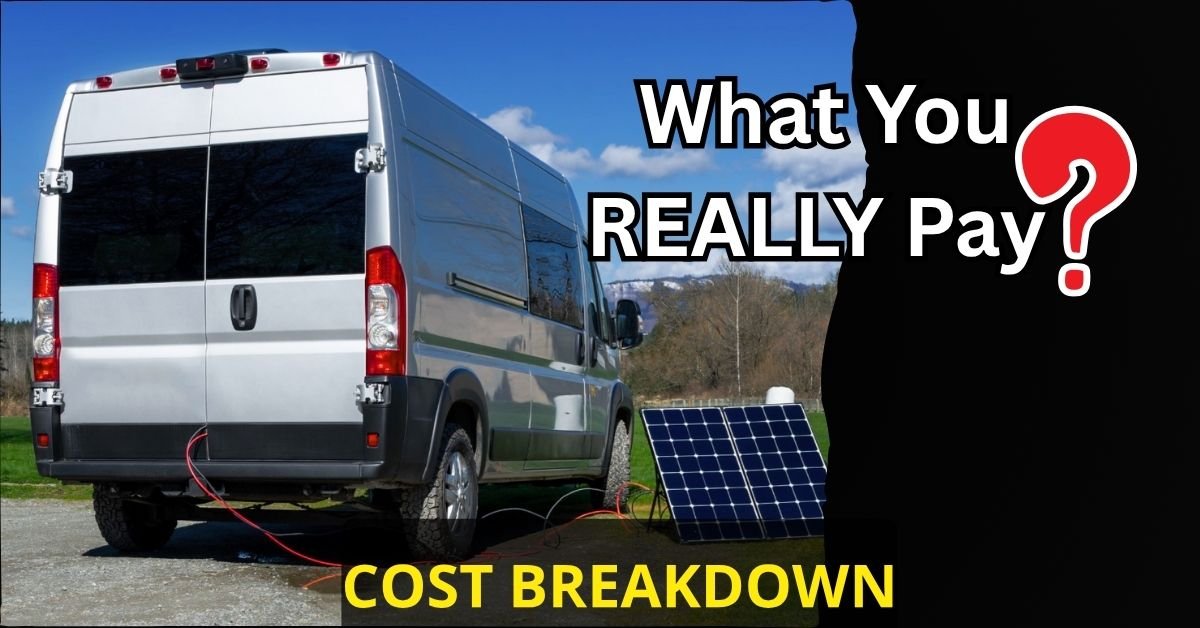7 Signs Your Solar System Needs Maintenance (Solar Panel Maintenance Checklist): Solar panels are built to last, but like any technology, they need regular upkeep to perform at their best. Ignoring maintenance can lead to reduced efficiency, higher energy bills, or even system failure. How do you know when your solar system needs attention?
This solar panel maintenance checklist highlights the key warning signs and what to do about them.
Why Regular Solar Panel Maintenance Matters
Solar panels are built to last typically 25 to 30 years, but they’re not entirely maintenance-free. Environmental factors, wear and tear, and electrical issues can all affect their performance over time.
Regular inspections and maintenance ensure:
- Optimal energy output
- Early detection of potential failures
- Extended system lifespan
- Compliance with warranty requirements
Ignoring these checks can mean missing out on savings or worse, facing unexpected breakdowns during peak energy usage.
Signs of Underperformance at a Glance
Before jumping into specific signs, it’s important to understand what solar underperformance looks like.
Watch for these general warning signs:
- Unexpectedly high electricity bills.
- Low daily kWh output on your monitoring app.
- A drop in system efficiency compared to seasonal averages.
- Frequent inverter alerts or error codes.
If you’re noticing any of the above, your system is trying to tell you something.
You can read: Top 10 Solar Gadgets For Home (You Can Actually Use).
7 Signs Your Solar System Needs Maintenance
Here’s your go-to solar panel maintenance checklist based on real-world issues:

✅ 1. Sudden Drop in Energy Output
How to Spot It:
- Check your solar monitoring app for sudden dips in energy generation.
- Compare daily and monthly outputs to previous records.
Common Causes:
- Shading from new tree growth
- Dirty or damaged panels
- Inverter or wiring issues
🔧 Tip: If your output drops significantly without a weather-related cause, it’s time for a system check-up.
✅ 2. Visible Dirt, Debris, or Bird Droppings
Why It Matters:
A layer of grime or droppings can block sunlight, reducing efficiency dramatically.
What to Look For:
- Yellow or brown stains
- Leaves, twigs, or snow
- Dust buildup in dry seasons
🧽 Clean panels can improve performance by up to 15%, especially in dusty or high-pollen areas.
✅ 3. Cracks or Physical Damage to Panels
Warning Signs:
- Shattered or spider-web-like cracks on glass
- Warped or discolored panels
Causes:
- Hail storms
- Tree branches
- Extreme temperature changes
📸 Take periodic photos of your panels to compare and spot new damage over time.
✅ 4. Warning Lights on the Inverter
What It Means:
Your inverter is the brain of the system. If it’s flashing red or yellow, it’s likely trying to tell you something.
Actions to Take:
- Note the warning/error code
- Contact your installer or check the inverter’s manual
- Don’t attempt to fix electrical components yourself
⚡ Inverter issues are one of the most common (and critical) signs of system failure.
✅ 5. Unusual Noise or Odor
What to Watch For:
- Buzzing or clicking sounds
- Burning smell from wiring or components
🔥 This could indicate an electrical fault and should be addressed immediately by a professional to avoid fire risks.
✅ 6. Loose or Exposed Wiring
Visual Clues:
- Cables hanging out of place
- Exposed copper or disconnected wiring
- Rodent chew marks
Safety Risks:
- Electrical shorts
- Fire hazards
- Reduced system performance
🐿️ Pro Tip: Install rodent-proof mesh if you live in a wildlife-prone area.
✅ 7. Outdated Monitoring Data
What It Indicates:
If your app or system stops updating, you could be flying blind.
Troubleshooting:
- Check Wi-Fi connections
- Restart your monitoring device or app
- Inspect the data logger or smart meter
📉 Without data, you can’t track performance drops or detect problems early.
Common Issues (Wiring, Dust, Inverter Errors)
⚠️ Wiring
- Loose connections
- Corrosion in terminals
- Chewed wires (rodents!)
🧼 Dust & Dirt
- Common in dry, windy climates
- Reduces light absorption by up to 20%
- Requires regular cleaning every few months
🧠 Inverter Errors
- Flashing warning lights or shutdowns
- Check for error codes and consult your inverter manual
- Most issues require a licensed technician
When to Call a Technician
Some problems just aren’t DIY-safe. Call a certified solar technician if you encounter:
- Persistent inverter errors
- Burnt smells near the electrical panel
- Cracked or shattered panels
- Exposed wires or corrosion
- Unexplained power loss after all basic checks
🛠 Pro Tip: Schedule a professional inspection once a year to ensure optimal performance and safety.
Solar Panel Maintenance Checklist: DIY vs. Professional Help
| Task | DIY? | When to Call a Pro |
| Visual Inspection | ✅ Yes | ❌ No (unless damage is found) |
| Panel Cleaning | ✅ Yes | ❌ No (unless roof is unsafe) |
| Inverter Troubleshooting | ❌ No | ✅ Yes (always) |
| Wiring Checks | ❌ No | ✅ Yes (safety risk) |
| Performance Analysis | ❌ No | ✅ Yes (requires tools) |
Creating a Solar Panel Maintenance Checklist
To keep your system running smoothly, follow this easy-to-use solar panel maintenance checklist:
✅ Monthly:
- Monitor energy production via your solar app
- Visually inspect panels from ground level
✅ Every 6 Months:
- Clean panels (if needed)
- Check for shading issues
- Inspect mounting equipment for looseness or rust
✅ Annually:
- Schedule a professional inspection
- Test inverter functionality
- Evaluate wiring and connection integrity
✅ Every 5 Years:
- Deep clean panels with professional-grade tools
- Replace faulty microinverters or optimize array layout
📌 Many solar providers offer maintenance packages; consider one if you’re not DIY-inclined.
DIY Monthly Inspection Checklist
Doing a quick check each month can help you catch small problems before they escalate. Use this simple solar panel maintenance checklist:
✅ Check energy output via your monitoring app
✅ Visually inspect panels for dirt, damage, or bird droppings
✅ Listen and look for unusual inverter noises or lights
✅ Examine wires and connections (safely, without touching!)
✅ Clear any nearby overhanging branches
✅ Look for nests or signs of animals under panels
✅ Document any findings and take pictures for your records
Pros & Cons of DIY vs Professional Maintenance
| DIY Maintenance | Professional Maintenance |
| 🟢 Cost-effective | 🟢 Expert diagnosis and repair |
| 🟢 Immediate response to small issues | 🟢 Full system diagnostics |
| 🔴 Risk of injury or damage | 🔴 Higher upfront cost |
| 🔴 Limited knowledge of electrical systems | 🔴 Scheduling delays are possible |
💡 Best Practice: Combine both approaches. Handle basic visual checks and light cleaning yourself, and schedule annual visits from a certified technician.
Mini-FAQ: People Also Ask
How often should I check my solar panels?
Check them visually every few months and clean them at least once or twice a year, depending on your environment.
Do solar panels need servicing?
Yes. While panels are low-maintenance, inverters and wiring need periodic inspection. A professional service every 1-2 years is recommended.
What reduces solar panel efficiency?
Dirt, shading, physical damage, inverter issues, and poor maintenance are common culprits.
Q: How often should I clean my solar panels?
A: Every 6 months is ideal in most climates. Dusty or dry regions may require more frequent cleaning.
Q: Can I inspect my solar system myself?
A: Yes, simple visual checks and reviewing performance metrics can help spot early issues.
Q: What should I do if my inverter is beeping?
A: Refer to the user manual for code meanings, and contact a certified technician if unsure.
Q: Does solar panel maintenance void the warranty?
A: Not if done by an authorized technician. Always check your manufacturer’s guidelines.
Q: Is solar maintenance expensive?
A: Annual inspections typically range between $150-$300, depending on system size and complexity.
Bonus Tips
- Keep records of inspections, cleanings, and any repairs
- Install critter guards if animals are common in your area
- Clean panels safely with soft water and non-abrasive tools
- Never ignore error codes: they’re early warning systems
Maintaining your solar system doesn’t have to be hard or time-consuming. With regular attention and the right solar panel maintenance checklist, your investment will keep paying off for decades.
Related Post: Solar Panel Lifespan: How Long Do They Last & When to Replace.
Final Thoughts,
Stay Ahead with a Solar Panel Maintenance Checklist
Preventive care is key to getting the most out of your solar investment. By staying alert to changes in performance, conducting regular inspections, and scheduling professional maintenance, you can avoid costly surprises and enjoy reliable clean energy for decades.
🎓 Knowledge = Power (and Savings!)
Now that you know the signs and steps to take, make solar maintenance part of your seasonal routine.
💬 Got questions about solar maintenance or system health? Leave a comment below, and I will respond to every message!







